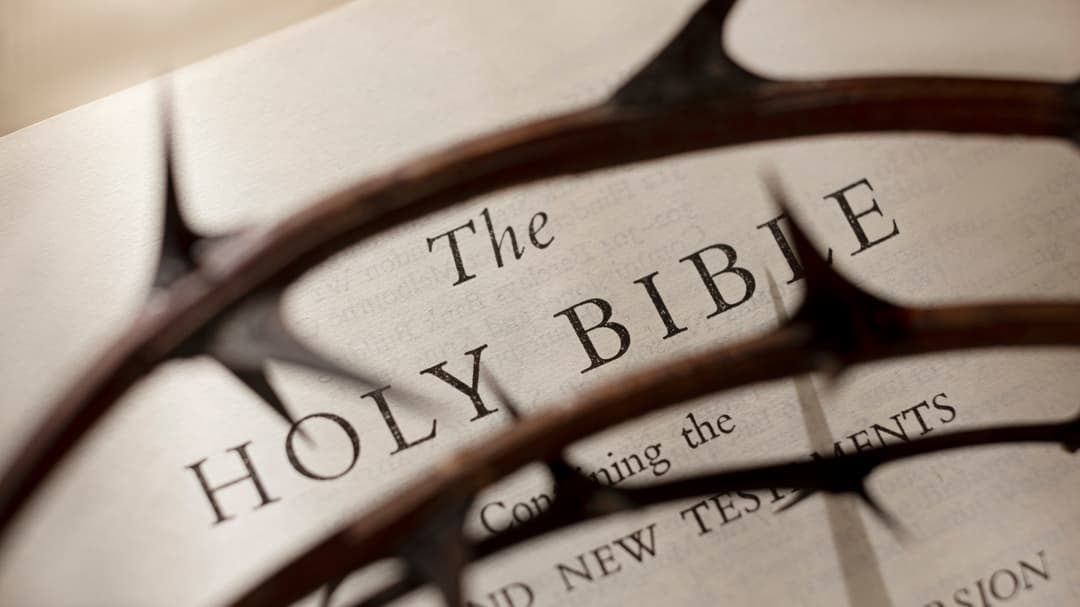The Origin and Meaning of the Nephilim
To determine whether Goliath could be associated with the Nephilim, it is essential to understand who the Nephilim were and how they are described in biblical texts. The first reference to Nephilim appears in Genesis 6:1-4, a key Nephilim Bible verse, which describes a time before the Flood. In this context, the sons of God united with the daughters of men, and from this union came beings known as the Nephilim. They are described as heroes of old, men of renown, suggesting both great physical strength and a significant influence on antediluvian society.
The Nephilim are frequently associated with giants, often described as having colossal size and unusual features. But what is a Nephilim? Over time, these descriptions have led to various interpretations. The term Nephilim is commonly translated as giants, but the exact meaning of the word is still debated. Some scholars suggest that it stems from the Hebrew root "npl," meaning "fallen ones," which could imply that the Nephilim were beings who had fallen either spiritually or morally, existing in a state of corruption or decline.
Some interpretations suggest that the Nephilim were born from the union of fallen angels and human women, which is why they are sometimes referred to as Nephilim angels, beings with both human and supernatural traits. In both biblical and apocryphal literature, this belief holds that the Nephilim, as offspring of these unions, possessed a supernatural nature, explaining their immense stature and extraordinary abilities. However, other interpretations suggest that the Nephilim were simply very tall and powerful individuals, perhaps military leaders or local rulers who gained fame through heroic acts and physical strength. In this case, Goliath, the renowned Philistine warrior, might be considered part of this category of legendary figures.
Fallen Angels and Nephilim
An intriguing theory suggests that the Nephilim were the descendants of fallen angels. According to certain traditions, these angels, who rebelled against God, were cast out of heaven and came to earth, where they mated with human women. Their offspring, the Nephilim, were described as giants with immense strength and stature, embodying a form of supernatural corruption.
This idea is explored in the Book of Enoch, an apocryphal text that recounts how fallen angels, known as Watchers, gave birth to the Nephilim giants who brought chaos and violence to the earth. Although this theory is not directly mentioned in the canonical Bible, it has influenced religious thought and interpretations surrounding the origin of these giants.
Some theologians propose that giants like Goliath could be distant descendants of these Nephilim. Goliath's great height and strength might place him in this legendary lineage. In this sense, the confrontation between David and Goliath was not just a physical battle, but a symbolic clash between good and evil, between divine forces and the legacy of fallen angels.
This perspective adds a deeper layer of understanding to Goliath's character, who can be seen not just as a giant warrior but as a symbol of the corruption and evil spread on earth by the fallen angels.
Get Closer to God Today
4.9
Average Rating
|Over 5 Million Downloads
Goliath: The giant warrior of Gath
Goliath is described in 1 Samuel 17 as a giant who came from Gath, a Philistine city famous for its residents of impressive stature. According to biblical texts, Goliath was six cubits and a palm tall, which is about 2.9 meters. This naturally raises the question: how tall were the Nephilim? While the Bible does not provide an exact height for the Nephilim, they are described as giants with immense size and strength, surpassing that of ordinary humans. At a time when people were generally much shorter, Goliath’s extraordinary height suggests a link to these ancient figures.
Although the Bible does not make a direct connection between Goliath and the Nephilim the legendary giants of Genesis, his size and origin in Gath have given rise to much speculation. The Nephilim in the Bible are described as the heroes of old, born from the union between the sons of God and the daughters of men, recognized for their unusual stature and strength. In this context, some scholars have suggested that Goliath could be a descendant of these biblical giants, or at least a descendant of giant nations mentioned in other texts.
Gath, the city where Goliath was from, is mentioned in the Bible as a place inhabited by giants. In Joshua 11:22, it is said that the giants known as Anakim remained in only a few cities after the conquest of Canaan, including Gath. This suggests that Goliath was part of an older tradition of giants that would have survived in the region. Thus, Goliath was not a rarity in his area, but a product of a population of people of extraordinary stature that continued to exist long after other major biblical events, such as the Flood.
Additionally, another intriguing detail appears in 2 Samuel 21:20, where another giant from Gath is mentioned who had six fingers and toes, a distinctive and unusual mark. This confirms that Goliath was not the only giant in the area, and that Gath was inhabited by several people with unusual physical features, contributing to theories of a lineage of Philistine giants. This raises the question: was Goliath human, or did he belong to a distinct race of beings, perhaps tied to the Nephilim? Some theories suggest that the giants of Gath may be descendants of a line of Nephilim that survived the Flood, despite the statement in Genesis that the Flood destroyed all corruption on earth. These giants may have escaped or reappeared due to unknown genetic factors.
Goliath was not only an exceptional warrior because of his size, but also a symbolic figure in Philistine culture. In addition to his status as an elite fighter, it is very likely that he was also viewed as a representation of divine power. In many ancient cultures, height and physical strength were often associated with divine favors or a connection to the supernatural world. Thus, Goliath would not only have been a warrior, but also a revered and feared figure, with a significance that went beyond the military sphere.
Another aspect that emphasizes Goliath's symbolic role is his nationality as a Philistine, a people often in conflict with the Israelites. Goliath, hailing from the city of Gath, was chosen to represent the Philistines in a direct duel against the Israelites, a decisive encounter that embodied more than just physical strength. In such confrontations, the chosen warriors symbolized the entire strength and faith of their people. Goliath, with his immense stature, was not merely a soldier but the ultimate symbol of Philistine strength and invincibility.
Therefore, Goliath is not just a giant in a biblical story, but a figure that has fueled much debate and speculation. Whether seen as a descendant of the Nephilim or as a legendary figure in the giant traditions of Gath, Goliath remains a fascinating character who continues to inspire scholars and theologians in interpreting the role of giants in biblical history.
Descendants of Anak and Nephilim
One of the strongest theories supporting the idea that Goliath was a Nephilim involves the descendants of Anak. In Numbers 13:33, the Nephilim are mentioned when the spies sent by Moses into Canaan saw the sons of Anak, who were of the Nephilim. This suggests a direct connection between the Nephilim and these Canaanite giants, who, according to some biblical sources, may have survived the Flood.
The family of Anak was known for their imposing stature and their reputation as fearsome warriors. Although there is no concrete evidence that Goliath was a direct descendant of Anak, the connection between the giants of Canaan and Goliath has often been suggested.
Furthermore, Goliath may have been a survivor of a line of giants that persisted in Canaan after the Flood. While speculative, this hypothesis is supported by the fact that the Nephilim were considered exceptional individuals, and Goliath’s size and warrior skills would align with this description.
The connection between the Philistines and the biblical giants
Another key element in the Goliath debate is the possible connection between the Philistines and the giants mentioned in the Bible. In biblical texts, the Philistines, known as the Israelites' enemies are sometimes associated with the biblical giants, including the Nephilim. Joshua 11:22 mentions that the Anakim giants survived in several Philistine cities, including Gath, Goliath’s birthplace, suggesting that he may have been one of the last giants in Canaan.
Some biblical traditions speak of several notable giants, and references are made to seven giants in the Bible in various interpretations. Though not all lists are the same, these giants often include figures such as Goliath, Og king of Bashan, and the Anakim. The depiction of Goliath as a powerful and warlike giant fits with how the Nephilim and other giants are portrayed in the Bible, known for their impressive size and immense strength. This association reinforces the idea that Goliath may have been a descendant of these giants, embodying overwhelming physical might.
Thus, Goliath was not only a formidable opponent but also a symbol of resistance to the divine plan. His defeat by David was more than just a physical battle; it represented the triumph of faith over brute strength and corruption, marking a pivotal moment in the biblical narrative of the struggle between good and evil.
Get Closer to God Today
4.9
Average Rating
|Over 5 Million Downloads
Goliath and the Nephilim – the symbolic battle between good and evil
Goliath is more than just a giant warrior, he represents the remnants of an old and corrupt world, dominated by the Nephilim giants who symbolized chaos and rebellion against divine will. The Flood was meant to cleanse the earth of this evil, but Goliath's presence suggests that evil, in various forms, continues to persist. Goliath becomes not just a physical adversary but a force of darkness and a symbol of the eternal struggle between good and evil.
David, in this battle, does not rely on traditional weapons. He sees more than just a giant in front of him, he recognizes a spiritual challenge. Rather than relying on brute strength, David places all his trust in faith, transforming himself into more than just a young warrior. His faith becomes his invisible armor, turning what seems like a simple duel into a much larger confrontation between light and darkness.
Goliath's fall is not merely a physical defeat. The seemingly invincible giant is brought down not just by the force of a stone, but by the power of faith and divine intervention. It is a triumph of the human spirit, proving that good can indeed overcome evil. No matter how overwhelming the darkness or discouraging the obstacles, they can be conquered when we anchor ourselves in faith and draw strength from a higher source.
The story of David and Goliath goes beyond a mere physical encounter; it resonates with all of us. Goliath symbolizes the fears, struggles, and failures we face in life. Yet David reminds us that no matter how impossible these challenges may seem, we have the power to overcome them through faith, inner strength, and courage. The message is clear: light will always prevail over darkness, no matter how formidable the obstacle, when we trust in something greater than ourselves.
Conclusion
Although there is no definitive evidence in the Bible that Goliath was a Nephilim, the many connections between him, the giants of Canaan, and the Nephilim suggest that this hypothesis is worth considering. His origin from a Philistine city known for its giants strengthens this theory, leaving the question of his true nature open.
The question “Was Goliath a Nephilim?" continues to spark interest and fuel theological debates. While there may not be a clear answer, what draws attention is not so much his precise origins as his symbolic role in biblical tradition. Goliath is more than just a giant; he represents overwhelming power and adversities that seem impossible to overcome, yet are defeated through courage and faith.
Even though we may never know for certain if Goliath was a Nephilim, the essence of his story remains unchanged: he symbolizes all the seemingly insurmountable challenges that can be conquered with courage and trust in the divine. In this sense, Goliath transcends history, becoming a universal archetype of the struggle between hope and fear, between inner strength and the overwhelming forces of fate.









